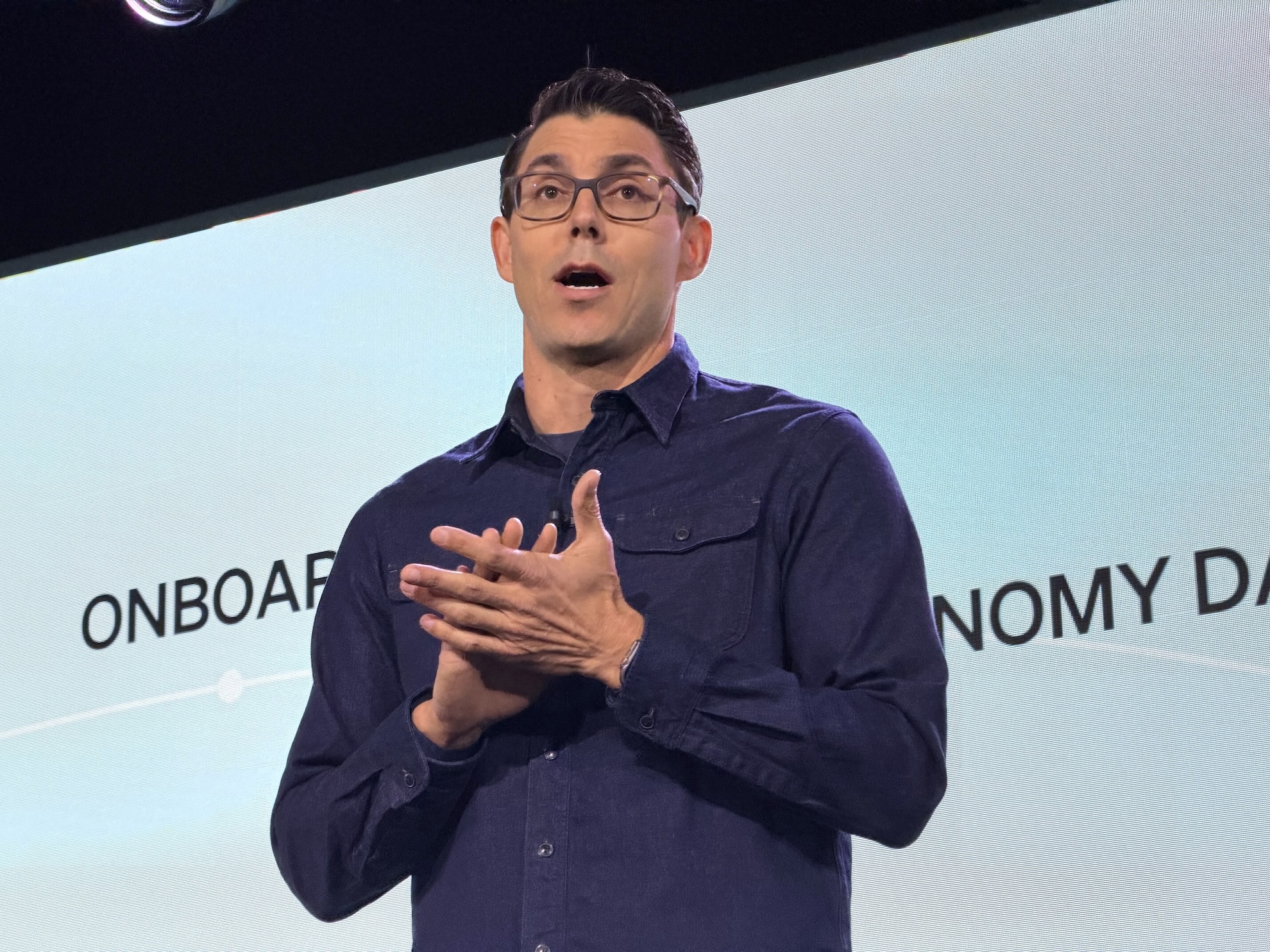
Tekedra Mawakana, co-CEO of Waymo, delivered a resolute message during her appearance on the TechCrunch Disrupt 2025 stage, underscoring the critical necessity for the company to dramatically scale its operations. Her comments arrived at a pivotal juncture for the autonomous vehicle (AV) industry, where the ambitious pursuit of profitability intertwines with the rigorous demands of ensuring public safety. Mawakana articulated a conviction that expanding Waymo’s footprint could, paradoxically, enhance road safety by replacing human fallibility with advanced AI driving systems.
The Mandate to Scale
This strategic imperative for expansion directly informs Waymo’s aggressive growth trajectory, which has seen the company accelerate its deployment across numerous urban centers. The current year has been marked by a furious pace of market entry, with plans to launch in major U.S. cities including Washington D.C., Miami, Denver, Dallas, Seattle, and Nashville. Beyond domestic horizons, Waymo has also set its sights on international expansion, with a planned robotaxi service debut in London by 2026. This extensive rollout is significantly bolstered by strategic alliances with established ride-hailing and rental car giants such as Uber, Lyft, and Avis, leveraging their existing networks and customer bases to facilitate rapid market penetration. The ultimate objective, as outlined by Mawakana, is audacious: to facilitate one million trips per week by the conclusion of 2026, a target that would fundamentally transform the landscape of urban mobility.
Waymo, a company that originated from Google’s self-driving car project in 2009 and spun out as a standalone entity under Alphabet in 2016, has long been a pioneer in the autonomous driving sector. Its journey began with cautious testing in controlled environments, gradually progressing to public trials in cities like Phoenix, Arizona, which became the proving ground for its initial commercial service. This methodical approach established Waymo as a frontrunner, showcasing the potential for Level 4 autonomous driving—where the vehicle can handle most driving situations independently within defined operational design domains. The current push for expansion signifies a transition from incremental growth to an all-out effort to capture significant market share, driven by the immense capital investments poured into the AV sector and the pressure to demonstrate a viable, scalable business model.
Navigating Regulatory Waters and Public Perception
While the vision of a million weekly trips paints a picture of transformative efficiency and accessibility, Mawakana candidly acknowledged the formidable challenges inherent in achieving such scale without compromising safety. A significant portion of her discussion with TechCrunch transportation editor Kirsten Korosec centered on how Waymo meticulously addresses these complexities. Mawakana firmly asserted that Waymo’s autonomous vehicles operate with a demonstrably higher level of safety compared to the average human driver. This assertion is supported by a recent Waymo-commissioned report, which claimed its vehicles are five times safer overall and an impressive twelve times safer for pedestrians than human-driven counterparts. These statistics are crucial for Waymo as it seeks to build public trust and secure regulatory approvals in new territories.
However, the path to widespread acceptance is seldom smooth. The autonomous vehicle industry operates under intense scrutiny, and every incident, no matter how minor, tends to garner significant media attention and public debate. Mawakana, without directly naming competitors, took a pointed jab at other players in the AV space, criticizing what she perceived as a lack of transparency regarding their safety data and operational incidents. "It is incumbent upon [them] to be transparent about what’s happening," she stated, emphasizing that a failure to disclose critical information undermines the collective effort to validate and earn the public’s confidence in AV technology. She argued that true commitment to making roads safer necessitates open communication about challenges and lessons learned, not just successes.
This call for transparency comes amidst ongoing efforts by Waymo to refine its systems and address so-called "edge cases"—unusual or unpredictable scenarios that challenge even the most sophisticated AI. One such incident recently occurred in Atlanta, Georgia, where a Waymo vehicle was observed pulling out in front of a stopped school bus, an event that subsequently triggered an investigation by the National Highway Traffic Safety Administration (NHTSA). Such occurrences, while statistically rare, highlight the complexities of real-world driving environments and the continuous need for technological refinement. These "head-scratching decisions," as Mawakana acknowledged, serve as critical learning opportunities for Waymo’s engineering teams, informing software updates and operational protocols to prevent recurrence.
The Safety Imperative: Data vs. Incident
The philosophical debate surrounding AV safety often pits statistical superiority against the emotional impact of individual incidents. While Waymo’s data may indicate a statistically safer driving record, public perception is heavily influenced by high-profile accidents or peculiar operational glitches. The human brain is hardwired to react strongly to perceived threats, especially those involving novel technologies. Therefore, even minor errors by an autonomous vehicle can erode trust more quickly than a multitude of human-caused accidents. Mawakana recognized this inherent tension, stating, "It’s important to recognize, it’s not going to be perfection, but that doesn’t mean you shouldn’t be accountable for transparency." She elaborated that Waymo anticipates incidents will occur, not as a matter of "whether" but "when," and the company plans accordingly, focusing on rapid response, investigation, and system improvement.
The reality of operating alongside human drivers, who are prone to distraction, error, and unpredictable behavior, means that autonomous vehicles will inevitably encounter situations leading to accidents. Mawakana underscored this point, noting the tragic toll of human driving—millions of deaths and injuries annually on roadways. In this context, the overarching goal of AVs is not zero incidents, which is an unattainable ideal, but a significant reduction in overall road fatalities and injuries. This distinction is crucial for understanding the industry’s long-term vision. When pressed on whether society would accept a fatality caused by a robotaxi, even with the promise of greater overall safety, Mawakana responded with a nuanced perspective: "I think that society will." This reflects a belief that, over time, as the statistical benefits of autonomous driving become more evident and tangible, public acceptance will grow, provided companies maintain transparency and a commitment to continuous improvement.
The Road Ahead: Innovation, Investment, and Trust
The drive for scale is not merely about market dominance; it is also a fundamental aspect of achieving financial viability in a capital-intensive industry. Developing and deploying autonomous vehicle technology requires astronomical levels of investment in research, development, specialized hardware, and operational infrastructure. Companies like Waymo burn through substantial capital, and the path to profitability hinges on widespread adoption and efficient operation. By expanding rapidly into more cities and increasing trip volume, Waymo aims to lower per-trip costs, optimize fleet utilization, and generate sufficient revenue to sustain its operations and justify continued investment. The partnerships with Uber, Lyft, and Avis are critical to this strategy, providing immediate access to a vast customer base and operational efficiencies without the need to build out entirely new logistics networks from scratch.
Culturally, the integration of robotaxis into daily life represents a profound shift. It challenges long-held notions of personal mobility, ownership, and even the very definition of driving. The success of Waymo and its peers will depend not only on technological prowess but also on their ability to integrate seamlessly into urban environments and gain the trust of diverse communities. This involves not just technical safety but also addressing concerns around privacy, data security, and the social impact on jobs within the transportation sector. The expansion into a global metropolis like London further complicates this, requiring navigation of distinct regulatory frameworks, cultural norms, and infrastructure challenges.
The journey of autonomous vehicles from speculative innovation to mainstream transportation is a marathon, not a sprint. Waymo, with its aggressive expansion strategy and unwavering focus on safety and transparency, is positioning itself to be a dominant force in this evolving landscape. The next few years will be critical in demonstrating whether the promise of a safer, more efficient future of mobility can be realized at scale, and whether society is truly ready to embrace the transformative power of the robotaxi.





